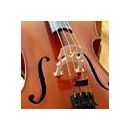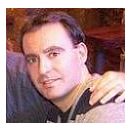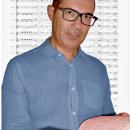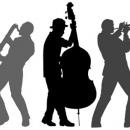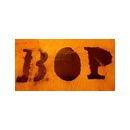Hola a todos,
Estoy intentando darle una vuelta de tuerca más a mi forma de enfocar los proyectos y después de estar unos días leyendo sobre el tema he hecho unas cuantas pruebas que me han sorprendido bastante, y voy a intentar cambiar un poquito mi forma de funcionar.
Me ha sorprendido que en Sibelius puedes hacer TODO lo que puedes hacer en Cubase con los CC y cambios de programa del MIDI, con la ventaja de que tienes la partitura delante.
Es decir, puedes desde hacer un keyswich (sin tener que escribir notas ocultas), regular la modulación, hacer un legato o un vibrato con los CC.
Eso ayudaría, por una parte, a tener la partitura mucho más realista, a la vez que utilizas los CC vas poniendo las correspondientes anotaciones para no perderte (pizzi, vibrato, trémolo, etc), y por otra parte, mientras estás componiendo con el GPO estudio puedes oír exactamente como sonará en Cubase
Hasta ahora me ha dado mejor resultado con los bancos X-Custom, parecen más preparados para esta forma de funcionar.
En la página de Garritan os podéis bajar dos plugins gratuítos para sibelius para trasladar a anotaciones MIDI en la partitura los crescendos/decrecendos y los legatos, con lo cual os sonará exactamente como si usarais el lápiz, y la mod wheel también funciona.
El único parámetro que tendréis que retocar será la velocidad, sino queréis hacerlo con el Live Playback del Sibelius que a mi no me convence demasiado.
Pero al importar al Cubase, será retocar la velocidad, y a meterle plugins!!! Pienso que puede ser un gran avance, aún estoy experimentando.
Os paso una lista de los controles disponibles:
---Controller Commands & Key switches---- [GPO with SIBELIUS]
O----CONTROLLER COMMANDS----O
~C1,xxx = Changes the volume from 1-127
~C16,xxx = Aggressive bow noise for short bows (1-127)
~C16,xxx = Hidden trills (Intervall Controller for Solo Strings KS patches)
~C17,xxx = Vibrato speed (1-127)
~C19,xxx = Hidden portamento (1-127)
~C20,xxx = Portamento (legato layer only) (1-127)
~C21,xxx = Length control of all articulations (1-127)
~C22,xxx = VAR 1 intonation variability (1-127)
~C23,xxx = VAR 2 timbre variability (1-127)
~C24,xxx = Controlls the level of reverb for wet audition instruments (1-127)
~C64,xxx = Legato from 1-127, remember to set ~C64,0 in the end of the legato frase
~Axxx = Sets the level of vibrato (1-127)
~Oxxx = Key Switches (remember it´s O and not 0)
(It works fine to combine CC´s & KS´s like this: ~O50~C1,90~A100~C17,127)
O----KEY SWITCHES----O
--[Woodwinds]--
FLUTE SOLO KS
~O48 = Vibrato
~O50 = Non-vibrato
~O52 = Flutter
PICCOLO SOLO KS
~O60 = Vibrato
~O62 = Non-vibrato
~O64 = Flutter
--[Brass]--
TPT 1 SOLO KS
~O48 = Open
~O50 = Muted
FRENCH HORN 1 SOLO
~O28 = Open
~O30 = Muted
TENOR TBONE SOLO
~O36 = Open
~O38 = Muted
--[Percussion]--
BASS DRUM KS
~O24 = Single
~O26 = Double
CROTALES KS
~O48 = Single
~O50 = Double
GLOCKENSPIEL KS
~O72 = Single
~O74 = Double
HANDBELLS KS
~O48 = Single
~O50 = Double
MARIMBA GRAND SYMPH KS
~O24 = Single
~O26 = Double
MARIMBA
~O36 = Single
~O38 = Double
PERCUSSION TOYS KS
~O48 = Single
~O50 = Double
SNARES KS
~O48 = Single
~O50 = Double
TIMPANI KS
~O24 = Single
~O26 = Double (60-81 => C6-A7)
TUBULAR BELLS KS
~O48 = Single
~O50 = Double
VIBRAPHONE KS
~O36 = Single
~O38 = Double
XYLOPHONE KS
~O60 = Single
~O62 = Double
--[Harps]--
HARP 1 KS COMBO
~O12 = Chromatic harp
~O14 = Glissando harp
~O16 = Harmonics
HARP 2 KS COMBO
~O12 = Chromatic harp
~O14 = Glissando harp
~O16 = Harmonics
--[Keyboards]--
HARPSICHORD KS
~O93 = 8´Stop, Brighter Sound
~O95 = 8´Stop & 4´Stop, Mellow Sound
~O96 = Buff Stop, Muted Sound
--[Solo Strings]--
VIOLIN 1 GAGLI KS SOLO, VIOLIN 2 STRAD KS SOLO, VIOLIN 3 GUARN KS SOLO
~O36 = Sustain (legato with sustain pedal)
~O37 = Sustain mute (legato with sustain pedal)
~O38 = Automatically alternating up and downbows
~O39 = Upbows
~O40 = Downbows
~O41 = Pizzicato
~O42 = Playable tremolo mute
~O43 = Playable tremolo
~O44 = Playable half step muted trills as default (additional intervals chosen with cc16)
~O45 = Playable half step trills as default (additional intervals chosen with cc16)
~O46 = Playable whole step muted trills
~O47 = Playable whole step trills
VIOLA KS SOLO
~O36 = Sustain (legato with sustain pedal)
~O37 = Sustain mute (legato with sustain pedal)
~O38 = Automatically alternating up and downbows
~O39 = Upbows
~O40 = Downbows
~O41 = Pizzicato
~O42 = Playable tremolo mute
~O43 = Playable tremolo
~O44 = Playable half step muted trills as default (additional intervals chosen with cc16)
~O45 = Playable half step trills as default (additional intervals chosen with cc16)
~O46 = Playable whole step muted trills
~O47 = Playable whole step trills
CELLO 1 KS SOLO, CELLO 1 KS SOLO, CELLO 1 KS SOLO
~O24 = Sustain (legato with sustain pedal)
~O25 = Sustain mute (legato with sustain pedal)
~O26 = Automatically alternating up and downbows
~O27 = Upbows
~O28 = Downbows
~O29 = Pizzicato
~O30 = Playable tremolo mute
~O31 = Playable tremolo
~O32 = Playable half step muted trills as default (additional intervals chosen with cc16)
~O33 = Playable half step trills as default (additional intervals chosen with cc16)
~O34 = Playable whole step muted trills
~O35 = Playable whole step trills
DBL BASS KS SOLO
~O12 = Sustain (legato with sustain pedal)
~O13 = Sustain mute (legato with sustain pedal)
~O14 = Automatically alternating up and downbows
~O15 = Upbows
~O16 = Downbows
~O17 = Pizzicato
~O18 = Playable tremolo mute
~O19 = Playable tremolo
~O20 = Playable half step muted trills as default (additional intervals chosen with cc16)
~O21 = Playable half step trills as default (additional intervals chosen with cc16)
~O22 = Playable whole step muted trills
~O23 = Playable whole step trills
--[SECTION STRINGS]--
VLNS 1 KS COMBO, VLNS 2 KS COMBO
~O36 = Sustain + short (legato with sustain pedal)
~O37 = Sustain + short mutes (legato with sustain pedal)
~O38 = Automatically alternating up and downbows
~O39 = Upbows
~O40 = Downbows
~O41 = Pizzicato
~O42 = Tremolo mutes (legato with sustain pedal)
~O43 = Tremolo (legato with sustain pedal)
~O44 = Half step muted trills (legato with sustain pedal)
~O45 = Half step trills (legato with sustain pedal)
~O46 = Whole step muted trills
~O47 = Whole step trills
VIOLAS KS COMBO
~O36 = Sustain + short (legato with sustain pedal)
~O37 = Sustain + short mutes (legato with sustain pedal)
~O38 = Automatically alternating up and downbows
~O39 = Upbows
~O40 = Downbows
~O41 = Pizzicato
~O42 = Tremolo mutes (legato with sustain pedal)
~O43 = Tremolo (legato with sustain pedal)
~O44 = Half step muted trills (legato with sustain pedal)
~O45 = Half step trills (legato with sustain pedal)
~O46 = Whole step muted trills
~O47 = Whole step trills
CELLOS KS COMBO
~O24 = Sustain + short (legato with sustain pedal)
~O25 = Sustain + short mutes (legato with sustain pedal)
~O26 = Automatically alternating up and downbows
~O27 = Upbows
~O28 = Downbows
~O29 = Pizzicato
~O30 = Tremolo mutes (legato with sustain pedal)
~O31 = Tremolo (legato with sustain pedal)
~O32 = Half step muted trills (legato with sustain pedal)
~O33 = Half step trills (legato with sustain pedal)
~O34 = Whole step muted trills
~O35 = Whole step trills
BASSES KS COMBO
~O12 = Sustain + short (legato with sustain pedal)
~O13 = Sustain + short mutes (legato with sustain pedal)
~O14 = Automatically alternating up and downbows
~O15 = Upbows
~O16 = Downbows
~O17 = Pizzicato
~O18 = Tremolo mutes (legato with sustain pedal)
~O19 = Tremolo (legato with sustain pedal)
~O20 = Half step muted trills (legato with sustain pedal)
~O21 = Half step trills (legato with sustain pedal)
~O22 = Whole step muted trills
~O23 = Whole step trills
FULL STRGS KS COMBO
~O12 = Sustain + short (legato with sustain pedal)
~O13 = Sustain + short mutes (legato with sustain pedal)
~O14 = Automatically alternating up and downbows
~O15 = Upbows
~O16 = Downbows
~O17 = Pizzicato
~O18 = Tremolo mutes (legato with sustain pedal)
~O19 = Tremolo (legato with sustain pedal)
~O20 = Half step muted trills (legato with sustain pedal)
~O21 = Half step trills (legato with sustain pedal)
~O22 = Whole step muted trills
~O23 = Whole step trill
Estoy intentando darle una vuelta de tuerca más a mi forma de enfocar los proyectos y después de estar unos días leyendo sobre el tema he hecho unas cuantas pruebas que me han sorprendido bastante, y voy a intentar cambiar un poquito mi forma de funcionar.
Me ha sorprendido que en Sibelius puedes hacer TODO lo que puedes hacer en Cubase con los CC y cambios de programa del MIDI, con la ventaja de que tienes la partitura delante.
Es decir, puedes desde hacer un keyswich (sin tener que escribir notas ocultas), regular la modulación, hacer un legato o un vibrato con los CC.
Eso ayudaría, por una parte, a tener la partitura mucho más realista, a la vez que utilizas los CC vas poniendo las correspondientes anotaciones para no perderte (pizzi, vibrato, trémolo, etc), y por otra parte, mientras estás componiendo con el GPO estudio puedes oír exactamente como sonará en Cubase
Hasta ahora me ha dado mejor resultado con los bancos X-Custom, parecen más preparados para esta forma de funcionar.
En la página de Garritan os podéis bajar dos plugins gratuítos para sibelius para trasladar a anotaciones MIDI en la partitura los crescendos/decrecendos y los legatos, con lo cual os sonará exactamente como si usarais el lápiz, y la mod wheel también funciona.
El único parámetro que tendréis que retocar será la velocidad, sino queréis hacerlo con el Live Playback del Sibelius que a mi no me convence demasiado.
Pero al importar al Cubase, será retocar la velocidad, y a meterle plugins!!! Pienso que puede ser un gran avance, aún estoy experimentando.
Os paso una lista de los controles disponibles:
---Controller Commands & Key switches---- [GPO with SIBELIUS]
O----CONTROLLER COMMANDS----O
~C1,xxx = Changes the volume from 1-127
~C16,xxx = Aggressive bow noise for short bows (1-127)
~C16,xxx = Hidden trills (Intervall Controller for Solo Strings KS patches)
~C17,xxx = Vibrato speed (1-127)
~C19,xxx = Hidden portamento (1-127)
~C20,xxx = Portamento (legato layer only) (1-127)
~C21,xxx = Length control of all articulations (1-127)
~C22,xxx = VAR 1 intonation variability (1-127)
~C23,xxx = VAR 2 timbre variability (1-127)
~C24,xxx = Controlls the level of reverb for wet audition instruments (1-127)
~C64,xxx = Legato from 1-127, remember to set ~C64,0 in the end of the legato frase
~Axxx = Sets the level of vibrato (1-127)
~Oxxx = Key Switches (remember it´s O and not 0)
(It works fine to combine CC´s & KS´s like this: ~O50~C1,90~A100~C17,127)
O----KEY SWITCHES----O
--[Woodwinds]--
FLUTE SOLO KS
~O48 = Vibrato
~O50 = Non-vibrato
~O52 = Flutter
PICCOLO SOLO KS
~O60 = Vibrato
~O62 = Non-vibrato
~O64 = Flutter
--[Brass]--
TPT 1 SOLO KS
~O48 = Open
~O50 = Muted
FRENCH HORN 1 SOLO
~O28 = Open
~O30 = Muted
TENOR TBONE SOLO
~O36 = Open
~O38 = Muted
--[Percussion]--
BASS DRUM KS
~O24 = Single
~O26 = Double
CROTALES KS
~O48 = Single
~O50 = Double
GLOCKENSPIEL KS
~O72 = Single
~O74 = Double
HANDBELLS KS
~O48 = Single
~O50 = Double
MARIMBA GRAND SYMPH KS
~O24 = Single
~O26 = Double
MARIMBA
~O36 = Single
~O38 = Double
PERCUSSION TOYS KS
~O48 = Single
~O50 = Double
SNARES KS
~O48 = Single
~O50 = Double
TIMPANI KS
~O24 = Single
~O26 = Double (60-81 => C6-A7)
TUBULAR BELLS KS
~O48 = Single
~O50 = Double
VIBRAPHONE KS
~O36 = Single
~O38 = Double
XYLOPHONE KS
~O60 = Single
~O62 = Double
--[Harps]--
HARP 1 KS COMBO
~O12 = Chromatic harp
~O14 = Glissando harp
~O16 = Harmonics
HARP 2 KS COMBO
~O12 = Chromatic harp
~O14 = Glissando harp
~O16 = Harmonics
--[Keyboards]--
HARPSICHORD KS
~O93 = 8´Stop, Brighter Sound
~O95 = 8´Stop & 4´Stop, Mellow Sound
~O96 = Buff Stop, Muted Sound
--[Solo Strings]--
VIOLIN 1 GAGLI KS SOLO, VIOLIN 2 STRAD KS SOLO, VIOLIN 3 GUARN KS SOLO
~O36 = Sustain (legato with sustain pedal)
~O37 = Sustain mute (legato with sustain pedal)
~O38 = Automatically alternating up and downbows
~O39 = Upbows
~O40 = Downbows
~O41 = Pizzicato
~O42 = Playable tremolo mute
~O43 = Playable tremolo
~O44 = Playable half step muted trills as default (additional intervals chosen with cc16)
~O45 = Playable half step trills as default (additional intervals chosen with cc16)
~O46 = Playable whole step muted trills
~O47 = Playable whole step trills
VIOLA KS SOLO
~O36 = Sustain (legato with sustain pedal)
~O37 = Sustain mute (legato with sustain pedal)
~O38 = Automatically alternating up and downbows
~O39 = Upbows
~O40 = Downbows
~O41 = Pizzicato
~O42 = Playable tremolo mute
~O43 = Playable tremolo
~O44 = Playable half step muted trills as default (additional intervals chosen with cc16)
~O45 = Playable half step trills as default (additional intervals chosen with cc16)
~O46 = Playable whole step muted trills
~O47 = Playable whole step trills
CELLO 1 KS SOLO, CELLO 1 KS SOLO, CELLO 1 KS SOLO
~O24 = Sustain (legato with sustain pedal)
~O25 = Sustain mute (legato with sustain pedal)
~O26 = Automatically alternating up and downbows
~O27 = Upbows
~O28 = Downbows
~O29 = Pizzicato
~O30 = Playable tremolo mute
~O31 = Playable tremolo
~O32 = Playable half step muted trills as default (additional intervals chosen with cc16)
~O33 = Playable half step trills as default (additional intervals chosen with cc16)
~O34 = Playable whole step muted trills
~O35 = Playable whole step trills
DBL BASS KS SOLO
~O12 = Sustain (legato with sustain pedal)
~O13 = Sustain mute (legato with sustain pedal)
~O14 = Automatically alternating up and downbows
~O15 = Upbows
~O16 = Downbows
~O17 = Pizzicato
~O18 = Playable tremolo mute
~O19 = Playable tremolo
~O20 = Playable half step muted trills as default (additional intervals chosen with cc16)
~O21 = Playable half step trills as default (additional intervals chosen with cc16)
~O22 = Playable whole step muted trills
~O23 = Playable whole step trills
--[SECTION STRINGS]--
VLNS 1 KS COMBO, VLNS 2 KS COMBO
~O36 = Sustain + short (legato with sustain pedal)
~O37 = Sustain + short mutes (legato with sustain pedal)
~O38 = Automatically alternating up and downbows
~O39 = Upbows
~O40 = Downbows
~O41 = Pizzicato
~O42 = Tremolo mutes (legato with sustain pedal)
~O43 = Tremolo (legato with sustain pedal)
~O44 = Half step muted trills (legato with sustain pedal)
~O45 = Half step trills (legato with sustain pedal)
~O46 = Whole step muted trills
~O47 = Whole step trills
VIOLAS KS COMBO
~O36 = Sustain + short (legato with sustain pedal)
~O37 = Sustain + short mutes (legato with sustain pedal)
~O38 = Automatically alternating up and downbows
~O39 = Upbows
~O40 = Downbows
~O41 = Pizzicato
~O42 = Tremolo mutes (legato with sustain pedal)
~O43 = Tremolo (legato with sustain pedal)
~O44 = Half step muted trills (legato with sustain pedal)
~O45 = Half step trills (legato with sustain pedal)
~O46 = Whole step muted trills
~O47 = Whole step trills
CELLOS KS COMBO
~O24 = Sustain + short (legato with sustain pedal)
~O25 = Sustain + short mutes (legato with sustain pedal)
~O26 = Automatically alternating up and downbows
~O27 = Upbows
~O28 = Downbows
~O29 = Pizzicato
~O30 = Tremolo mutes (legato with sustain pedal)
~O31 = Tremolo (legato with sustain pedal)
~O32 = Half step muted trills (legato with sustain pedal)
~O33 = Half step trills (legato with sustain pedal)
~O34 = Whole step muted trills
~O35 = Whole step trills
BASSES KS COMBO
~O12 = Sustain + short (legato with sustain pedal)
~O13 = Sustain + short mutes (legato with sustain pedal)
~O14 = Automatically alternating up and downbows
~O15 = Upbows
~O16 = Downbows
~O17 = Pizzicato
~O18 = Tremolo mutes (legato with sustain pedal)
~O19 = Tremolo (legato with sustain pedal)
~O20 = Half step muted trills (legato with sustain pedal)
~O21 = Half step trills (legato with sustain pedal)
~O22 = Whole step muted trills
~O23 = Whole step trills
FULL STRGS KS COMBO
~O12 = Sustain + short (legato with sustain pedal)
~O13 = Sustain + short mutes (legato with sustain pedal)
~O14 = Automatically alternating up and downbows
~O15 = Upbows
~O16 = Downbows
~O17 = Pizzicato
~O18 = Tremolo mutes (legato with sustain pedal)
~O19 = Tremolo (legato with sustain pedal)
~O20 = Half step muted trills (legato with sustain pedal)
~O21 = Half step trills (legato with sustain pedal)
~O22 = Whole step muted trills
~O23 = Whole step trill

